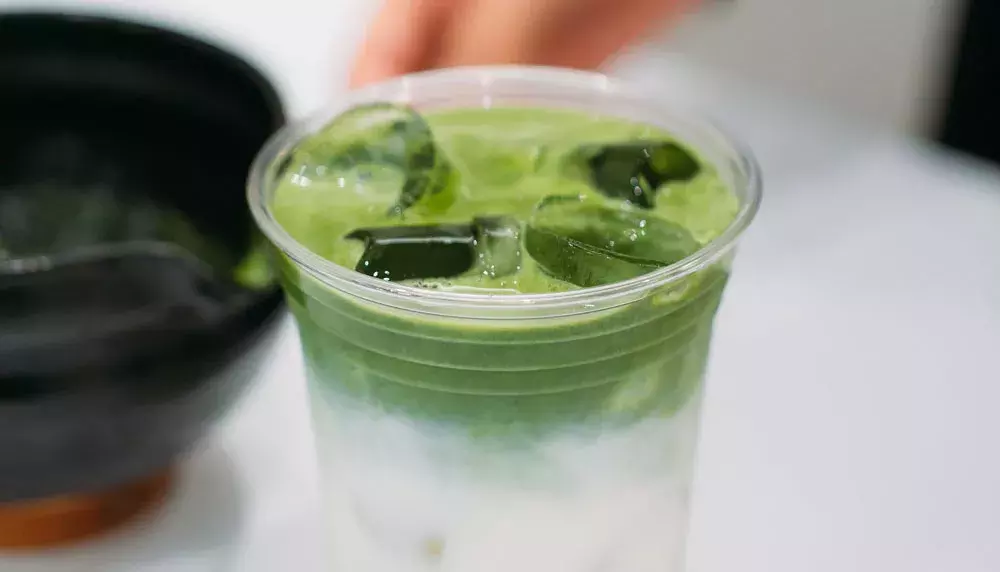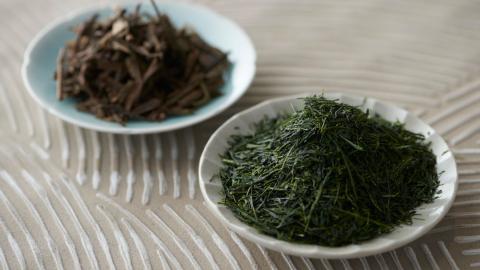
Last year, the popular American fast food chain Dunkin’ Donuts introduced a new item to its drinks menu that made national headlines: matcha latte. Though Japanese-inspired matcha green tea drinks have become globally trendy the past few years, even becoming a staple item at Starbucks, their embrace by the ultimate “all-American” donut shop signifies their true arrival as a cultural crossover. Of course, the story of Japanese tea ranges far beyond matcha, and goes much deeper than a simple beverage.
“Tea is more than an idealization in the form of drinking,” wrote scholar Okakura Kakuzō over a century ago, “it is a religion of the art of life.” In his 1906 essay turned manifesto “The Book of Tea,” Okakura helped introduce Japanese tea traditions to the West, focusing not only on the varieties of tea and styles of preparation, but the unique way that tea had become a part of Japanese culture and philosophy.
Tea was first introduced to Japan in the 8th century by Buddhist monks returning from travels in China, and from that point it has always had a strong link to spirituality. During the Kamakura period (1185-1333), powdered green tea, or matcha, was introduced from China by Japanese monks who had trained there in meditational Buddhism, or Zen in Japanese. Zen Buddhist monks drank it to help them stay alert through long hours of meditation and ritualized the serving of tea in certain temple ceremonies.
Gradually, the drinking of matcha spread beyond the religious communities and into the residences of the military elite. From the mid-14th century, the serving and drinking of tea evolved into a formalized “tea ceremony,” or Cha no yu (also known as Chadō and Sadō), based on the sequence of steps necessary to prepare powdered matcha green tea and the creation of a highly aestheticized environment for serving and drinking it. The coming centuries would see the development of many different schools of “tea ceremony,” which is considered an art form and part of Japan’s intangible cultural heritage. Though heightened to the level of performance or spiritual practice, all forms of Chadō have a common foundation: a host prepares tea for guests with a series of specially placed objects and carefully observed gestures. It’s a way to pause everyday life to share a moment of the sublime or transcendent, simply through the dance between tea, cup, water, and host and guest.
Even outside of the highly-stylized, sacred tradition of tea ceremony, tea is also deeply entrenched in Japan’s daily life - an essential staple that has evolved along with a changing society. Whether it’s consumed in a teahouse or grabbed out of a vending machine, all tea originally comes from the leaves of the same plant: Camellia sinensis.

The diversity of flavor and appearance of green, oolong, and black is caused by the tea’s preparation process, and whether the tea is allowed to dry “naturally” in open air after plucking (causing “fermentation”*), or if fermentation is halted through the application of heat. For the quintessential Japanese “green teas,” such as gyokuro, sencha, matcha and hōjicha, the leaves are exposed to direct sunlight until harvest, and are then steamed, roasted, or boiled to prevent fermentation – producing a tea that remains a vibrant green. For other teas such as oolong, which was first produced in China but also widely made and sold in Japan, heat is applied after the leaves have been partially fermented, leaving a somewhat smoky flavor. Black teas are fully fermented leaves, creating a rich, fruity, or flowery aroma and taste. Major producers of black tea include India, Sri Lanka, China, and Kenya, but Japan produces black tea as well.
Even in the category of Japan’s non-fermented green tea, there is a wide range of flavors and usages. Most common is the strong-bodied sencha which accounts for 85% of the total market for non-fermented tea in Japan. More niche varieties are the delicate gyokuro, genmaicha which mixes roasted popped brown rice kernels with green tea leaves, and the sweet hōjicha which is often used in cookies, cakes and other desserts. And of course, there is the deep, distinctive flavor of matcha, which early in its processing is ground into a powder to create the iconic bright green dust.

Over the past decades as Japan saw the rise of a new artisanal coffee culture (read more about that here), tea has also become a space for innovation and experimentation. Starting with the hybrid matcha “latte” pioneered in Japan, matcha has become known globally as a “superfood” and is appearing in everything from supplements to smoothies, kombucha to overnight oats. Other innovations appearing in Japanese cafés include using an Aeropress (traditionally for coffee) to brew tea, or “pourover” tea prepared in the same fashion as hand-dripped coffee.
Another popular trend has been the incorporation of tea into the craft cocktail scene, such as the respected Aoyama teashop of Sakurai Shinya which offers traditional tea-tasting, as well as refreshing inventions like a tea-infused rum or vodka cocktail. It seems Okakura Kakuzō would barely recognize some of the newest ways tea is woven into daily life, but they too illustrate the power, beauty, and versatility of tea in Japanese culture all these years later.
The next time you drink tea, green or black, in a traditional chashitsu (teahouse), your living-room, or even a fast-food chain, you can ponder the tea leaf’s long journey from field to your cup – each one carefully picked, withered, roasted or fermented, sorted, packed, steeped, blended and lovingly crafted in infinite ways, to help you enjoy “the art of life.”
*Note: The term “fermentation” is used in this article as in the convention of the tea trade in the English-speaking world. The correct word should be “oxidation.” In both oolong and black tea making, the actual changes in the green leaves are caused through oxidation (exposure to air), rather than fermentation, which occurs with the help of bacteria or yeast. Very few teas are prepared with this process.
*Note: Japanese names in this article are written in the traditional Japanese order, with the family name first and personal name last.

